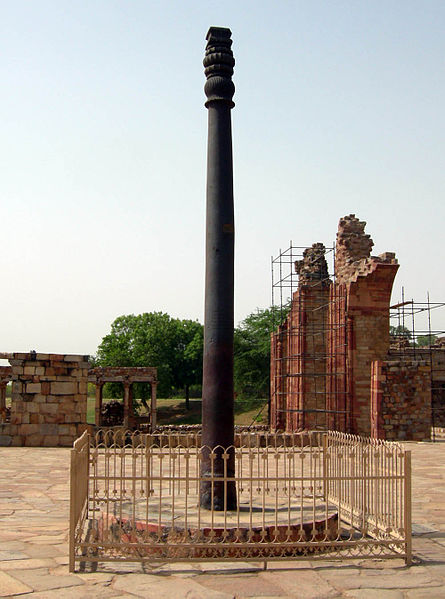An out-of-place artifact is an artifact of historical, archaeological, or paleontological interest to someone that is claimed to have been found in an unusual context, which someone claims to challenge conventional historical chronology by its presence in that context. Some people might think that those artifacts are too advanced for the technology known to have existed at the time, or that human presence existed at a time before humans are known to have existed. Other people might hypothesize about a contact between different cultures that is hard to account for with conventional historical understanding.
Fragment of the Antikythera mechanism, a mechanical computer from the 2nd century BCE showing a previously unknown level of complexity
The Tamil Bell is a broken bronze bell used as a cooking pot by Māori women of New Zealand.
The three components of the Baghdad Battery
The iron pillar of Delhi
An artifact or artefact is a general term for an item made or given shape by humans, such as a tool or a work of art, especially an object of archaeological interest. In archaeology, the word has become a term of particular nuance and is defined as an object recovered by archaeological endeavor, which may be a cultural artifact having cultural interest.
Mycenaean stirrup jar from Ras Shamra (Ugarit) Syria, 1400–1300 BC
A Crusading Period spoon from 1017 that was found on archaeological excavation of Tursiannotko in Pirkkala, Finland.






